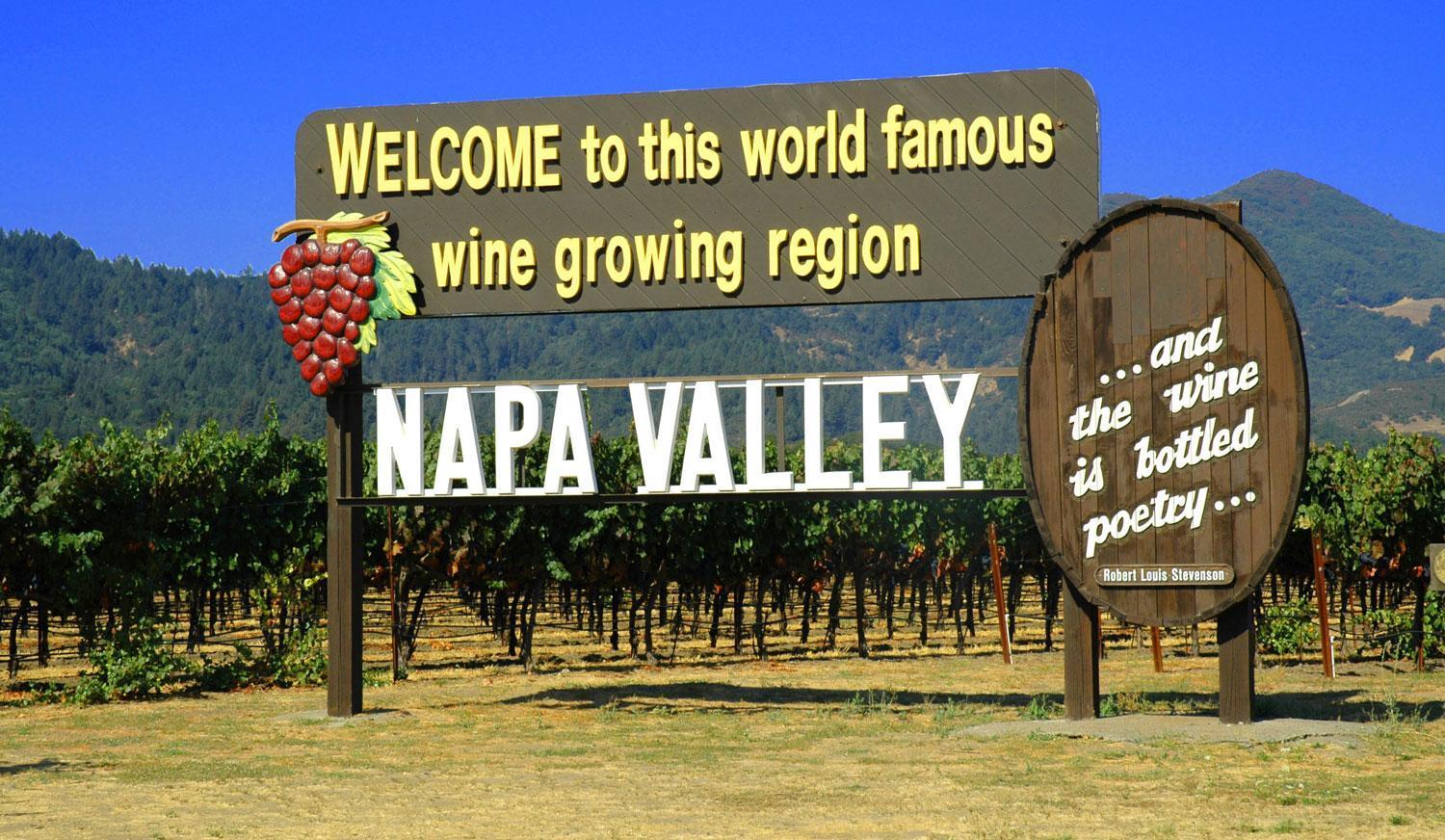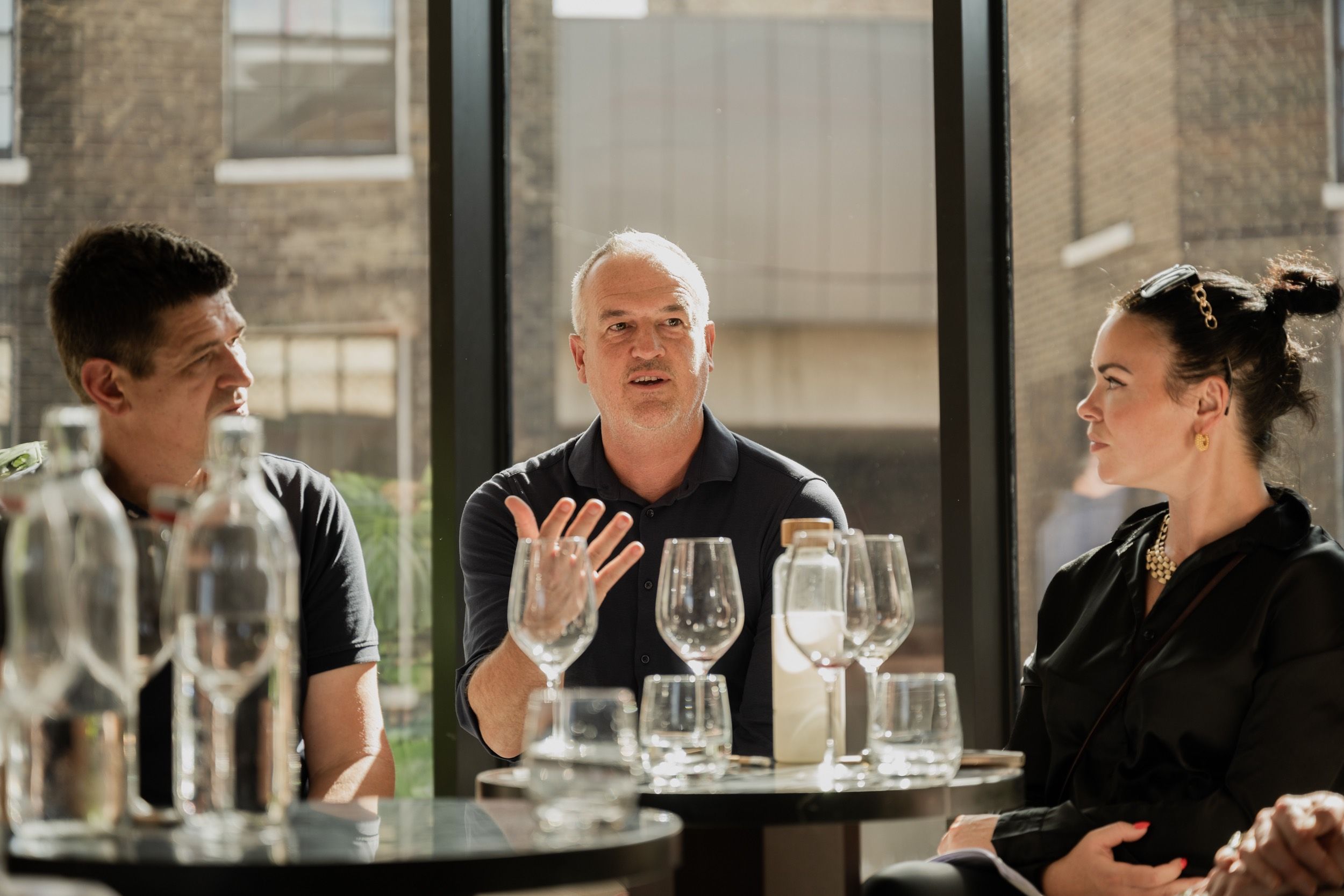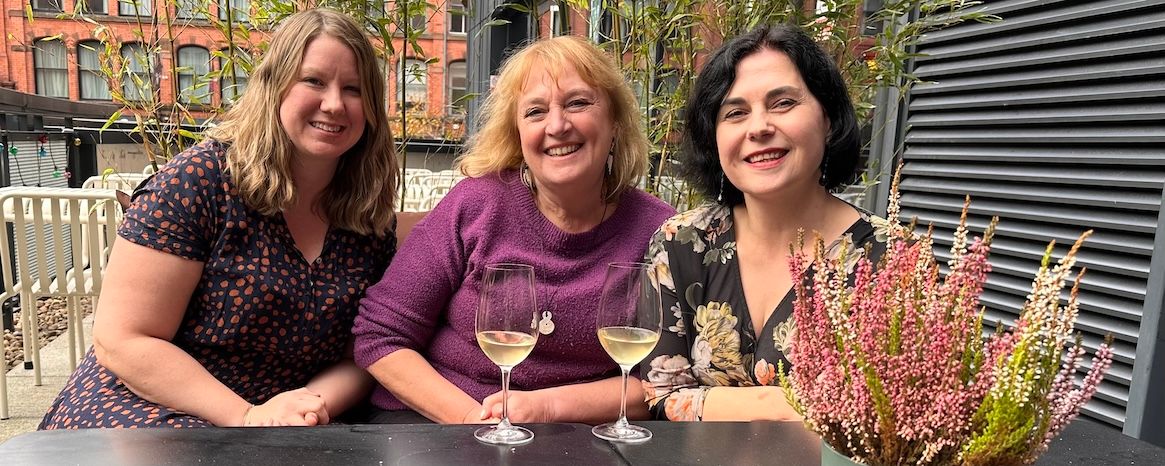Ovid, Inglenook, Duckhorn, Grgich and Robert Mondavi – five winemakers whose wines showed particularly well at the GuildSomm Napa masterclass.
The majority of tastings, masterclasses and dinners that wine writers are invited to are attended by fellow wine wordsmiths and media types, so it was a breath of fresh air to be present at a masterclass where the attendees were 95% sommeliers.
This meant that:
- All the wines were chosen with a view to being restaurant-friendly
- The questions were – on the whole – a bit more technical
- It started very early so it could all be wrapped up in good time for lunchtime service
- A fair number of attendees were wearing neck scarves
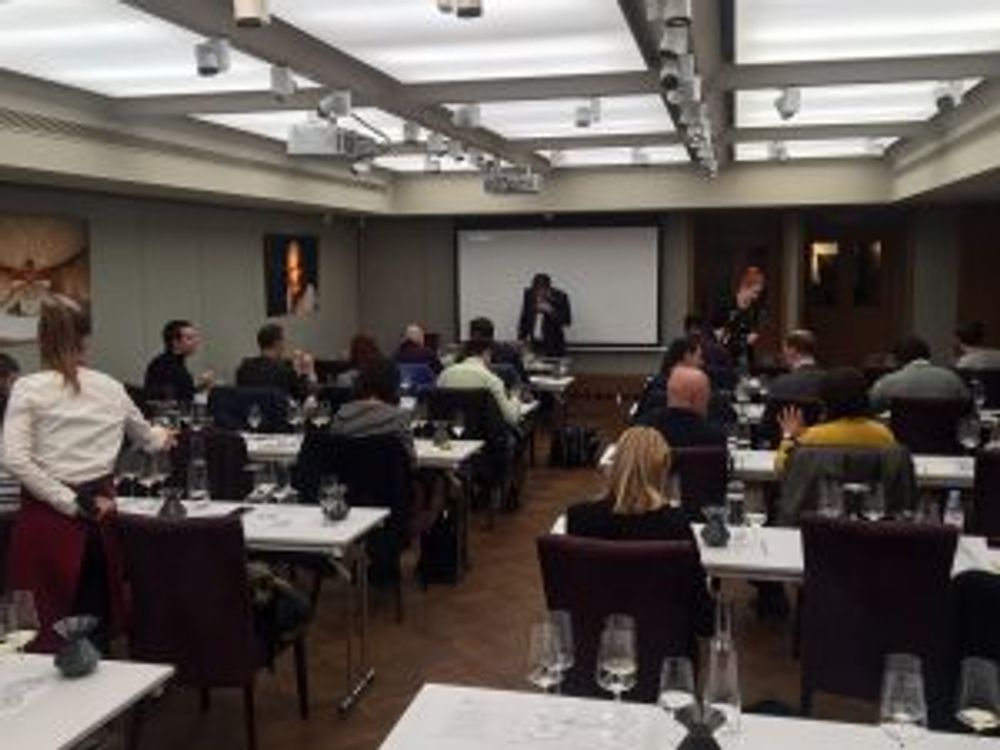
The masterclass was hosted by GuildSomm – the international organisation for sommeliers and wine professionals which offers education, advice and discussion on all things wine and service related – and focussed on wines from California’s famous Napa Valley.
GuildSomm President Geoff Kruth MS was a very impressive host, full of anecdotes, facts, opinions and questions on the region, its history, its reputation and its benchmark styles and wines.
Over the course of a 90-minute lecture and a 90-minute tasting he touched on numerous topics, a handful of which really stood out. Here are five key things to take away from the masterclass.
Napa Valley is complicated
Many people in and out of the wine trade still think of Napa as a two trick pony; Chardonnay and Cabernet. And while it does these tricks extraordinarily well, for some it’s difficult to look beyond these two varietals. Cabernet is undoubtedly still king (see below) in terms of ubiquity and scores but there’s so much more to the Napa landscape.
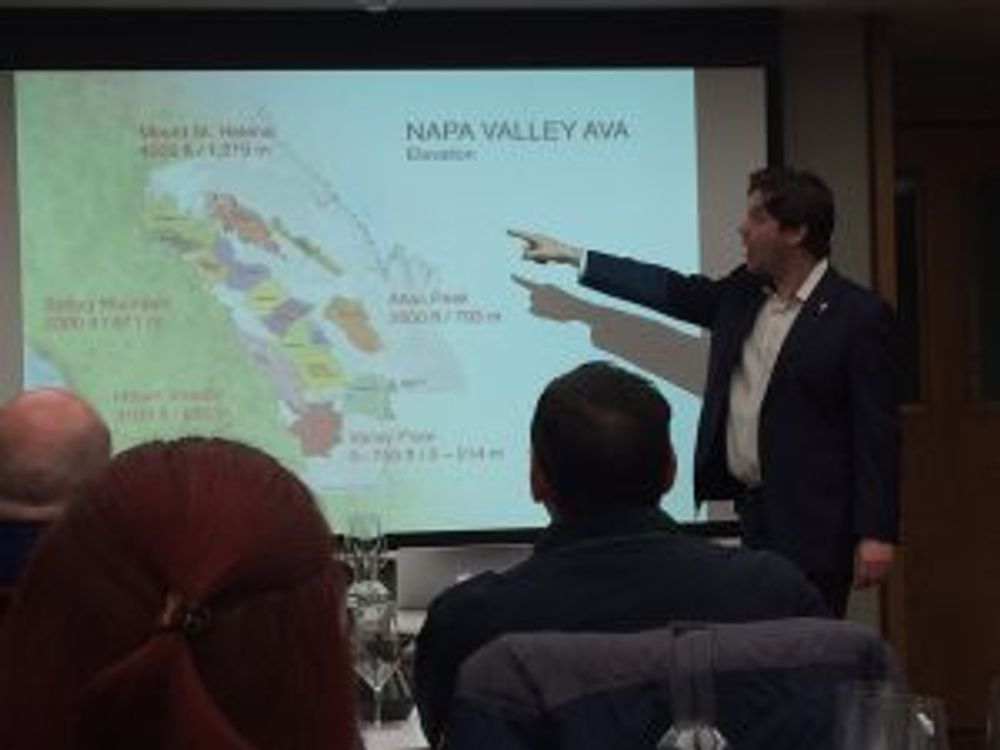
“People have a monolithic idea of what Napa Valley is like,” says Kruth. “But the reality is a much more complicated story.” He mentions Gruner, Vermentino, Ribolla Gialla, Mourvèdre, Petit Verdot and others as varieties that are found in Napa, as an example of how rich and diverse the production landscape is.
The 16 wines in the masterclass were “a really good representation of what’s happening in Napa right now.” The masterclass included Chardonnays and Cabernets – of course it did – but also Semillon, Sauvignon, Cabernet Franc and Syrah.
The message here is that you need to scratch the surface to really get to grips with this wildly varied region.
The long growing season is a real boon
If you’ve had the pleasure of visiting the Napa Valley you’ll be aware of its wonderful year-round climate. It very rarely rains and when it does rain it’s entirely predictable when and how much rain you’ll get.
This plays into the hands of the viticulturists and winemakers by taking away a huge element of doubt surrounding ripeness and weather events (such as hail) which in Europe could seriously impact on a vintage. With no pressure to pick in a specific window, control is firmly in the hands of the winemaker.
“In the same sub-region, even in the same vineyard we can create wines that are big and ripe AND we can create wine that the Burgundians would say are too lean,” enthuses Kruth. This ability to define a wine’s ultimate style by when the grapes are picked is a great tool to have at your disposal, and explains why there is such a wide variety of styles produced in Napa.
Cabernet is king
In 1992 Cabernet Sauvignon became the most planted grape in the Napa Valley and it continues to stand head and shoulders above the rest. 55% of vines planted are Cabernet, compared to 30% for all other red varieties. That leaves 15% of vines producing white varieties, of which 11% is Chardonnay.
It’s easy to see from these stats why Cabernet and Chardonnay are so synonymous with the region. The key reason why Cabernet dominates is that it commands significantly higher bottle prices than all other grapes due to decades of stellar reviews underpinned by a raft of premium, Cab-dominant wines from famous wineries such as Screaming Eagle, Mondavi, Stag’s Leap and Inglenook.
Kruth was keen to point out that while the Napa Valley accounts for 25% of the value of Californian wine, it only accounts for 4% of production. This further illustrates the high prices commanded by fruit and wine in this pocket of California. Particularly Cab.
Style differences are not defined by sub-AVAs
Within the Napa Valley AVA (American Viticultural Area) there are 16 sub-AVAs, from Calistoga in the north to Carneros in the south. Within these 16 sub-regions there’s a distinction between ‘valley-floor’ areas and ‘mountain/hillside’ areas.
According to Kruth it is these two distinctive areas and the different geological, environmental and climatic assets they offer which account for the clearest stylistic differences in the Valley. “There are not huge and definable stylistic differences between the sub-AVAs,” he says, “these are more evident between valley floor areas and mountain areas.”
Broadly speaking mountain areas offer more tannins and riper fruit, while the valley floor wines are more generous and rounded. Furthermore the distinct diurnal shift in temperature in valley floor vineyards creates fruit with increased acidity and freshness.

A truce has been called in the Somms Vs Scores battle
For many years sommeliers in the USA and around the world were quick to dismiss Napa Valley wines out of hand as vanity wines and products of a system that courted journalist scores and points, but in recent times this has changed.
“Gone are the days when somms were passé about Napa and offered a knee-jerk opposing reaction to the 100-point scores of wine magazines,” says Kruth. “Somms have rediscovered classic wines from the region and new wines, now they recognise quality and push the points/tourism aspect out of the frame.”
It was clear from the tasting, conducted to a room largely made up of sommeliers, that this is very much the case, with many of the wines tasted hailed as benchmark versions of style or variety. Let’s hope the London-based sommeliers present are successful in bringing some more of these brilliant wines to the UK.
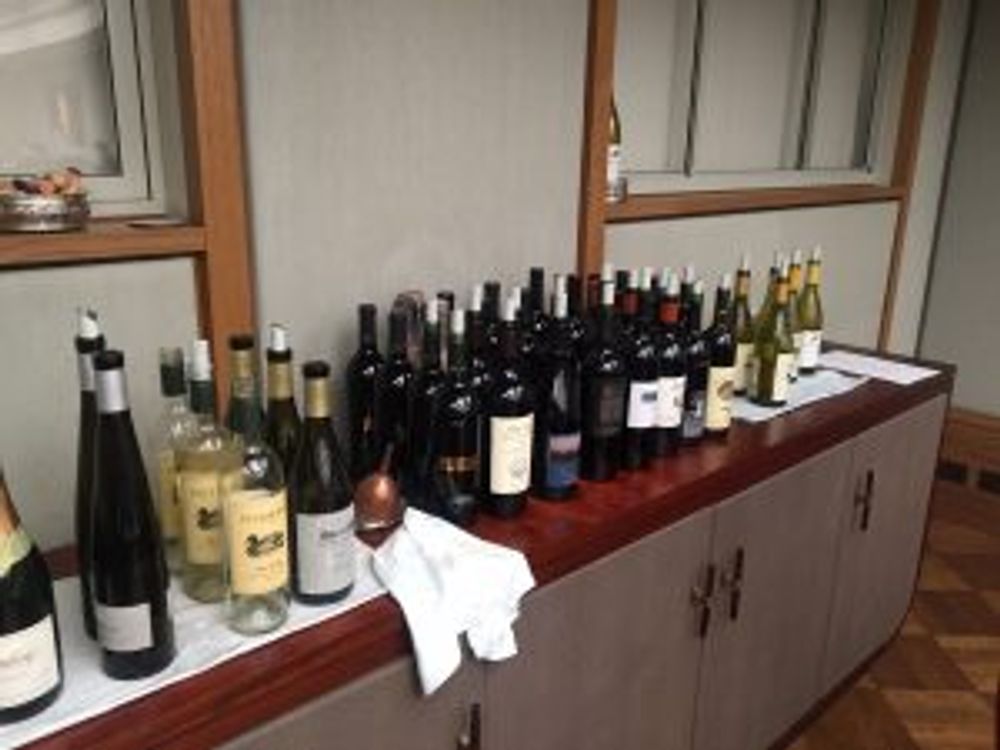
And the wines…
During the masterclass 16 wines from across the region and its many sub-AVAs were tasted with Geoff Kruth adding some fascinating insight and detail along the way. Here are five that really stood out and went down well with the sommelier-strong crowd.
Duckhorn Sauvignon Blanc 2015
Great nose, you can smell this a mile off. There’s confected fruit, a whiff of the sweet shop (Fruit Salad chews) and pineapple – but this is Sauvignon! A really punchy wine with some grapefruit and passionfruit on the palate. Clean and long.
Robert Mondavi Fumé Blanc 2013
There’s oak on the nose and chunky oak on the palate. Spice too on the back of the throat that’s soon smothered by a creaminess that’s very seductive. There’s a splash of Semillon in here too and a richness that begs for some accompaniment – oysters, truffle soufflé, pecorino?
Grgich Hills Estate Chardonnay 2013
This is a classic Napa Chardonnay. It’s in no way restrained and wears its oak-influence on its sleeve; there’s vanilla and butter and creamed corn. And fruit: lychee, ripe red apple, baked apple. A very well integrated wine. Bottled elegance.
Ovid Hexameter 2013
This blend of Cabernet Franc (65%) Cabernet Sauvignon and Merlot is rich and ripe with a medicinal edge and dusty fruit (plums, pomegranate). It’s the tertiary characters that really shine through, wild sage, herbs and a garrigue edge. A cult wine in style, but classic in execution.
Inglenook Cabernet Sauvignon Cask 2012
“Some of the best wines ever made in California,” says Kruth. This is four years old and still very young and tightly wound but there’s a classiness to it that shines through. The fruit is black and brooding with a mint tea sweetness on the mid-palate. It’s difficult to place this outside of Bordeaux.
